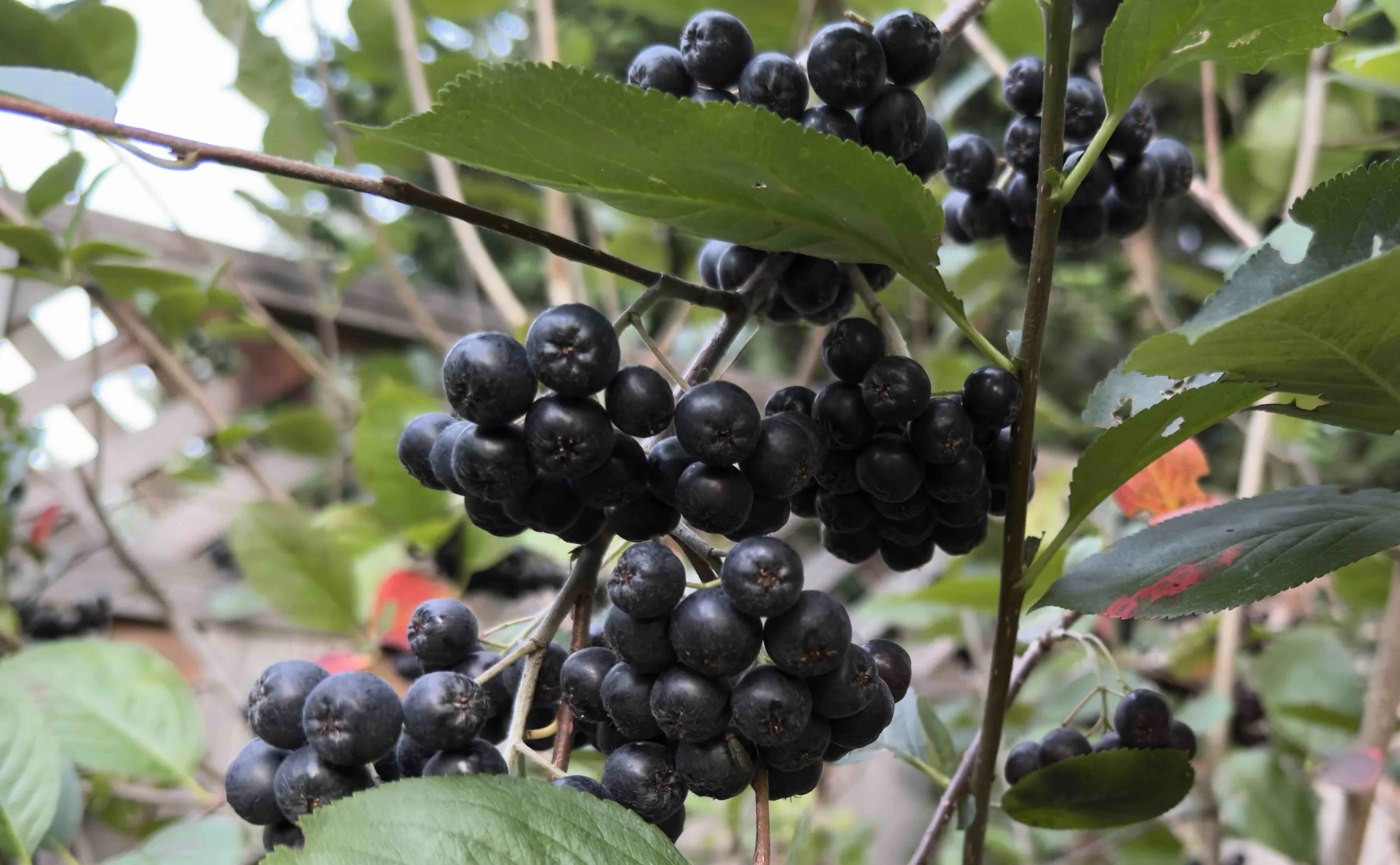The Tiny but Powerful Berry
While blueberries, raspberries, strawberries, blackberries are often lining produce shelves in our grocery stores, there’s one amazing berry you might not see as often. This is the powerhouse berry known as the aronia berry. I planted an aronia berry bush four years ago in my backyard, and every summer it explodes with berries! At first glance, aronia berries (also known as chokeberries) might look small and inedible, but don’t let their appearance fool you. These little berries are one of nature’s most powerful sources of antioxidants, with research-backed benefits for heart health, inflammation, immune support, and, yes, even the gut microbiome.
Aronia berries from my backyard
What are Aronia Berries?
Native to North America, aronia berries grow on hardy shrubs and have been traditionally used by Indigenous communities for both food and medicine. They get their deep, rich color from a group of antioxidants called anthocyanins, which also give blueberries, blackberries, and elderberries their superfood status. But aronia berries take antioxidant power to a higher level.
Antioxidant Powerhouse
Studies show that aronia berries have one of the highest antioxidant capacities of any fruit. These antioxidants help neutralize harmful free radicals, reducing oxidative stress and protecting your cells from damage. That’s great news for fighting inflammation, strengthening immune function, optimizing skin health, and preventing chronic disease.
Aronia Berries and Your Gut Microbiome: A Powerful Connection
Your gut microbiome is a complex community of trillions of microorganisms that play a critical role in digestion, immune function, and overall health. Maintaining a robust microbiome is essential to feeling your best. Aronia berries support this balance in several key ways:
Rich Source of Polyphenols
Aronia berries are packed with polyphenols. Polyphenols are plant compounds that your gut bacteria love. When these polyphenols reach your intestines, beneficial bacteria ferment them, turning them into smaller bioactive compounds that nourish your gut lining and support immune regulation.
Prebiotic Effects
The polyphenols in aronia has prebiotic effects by selectively encouraging the growth of health-promoting bacteria such as Lactobacillus and Bifidobacterium species. In fact, aronia berries are one of the best foods to eat if you have low levels of Lactobacillus in your gut ecosystem.
Anti-Inflammatory Impact
Chronic gut inflammation can disrupt the microbiome and impair digestion. The antioxidants and anti-inflammatory compounds in aronia help combat gut inflammation, promoting a healthier environment for beneficial gut bacteria to thrive.
Potential to Inhibit Harmful Bacteria
The rich polyphenols in aronia may reduce the growth of harmful pathogens in the gut like Clostridium difficile and E. coli, helping maintain a balanced microbial community.
By nourishing your microbiome with antioxidant-rich foods like aronia berries, you are laying the foundation for long-term gut and overall health.
How to Enjoy Aronia Berries
If you bite into a fresh aronia berry, you might be surprised by the tartness and astringency, but there are easy and delicious ways to enjoy them
Blend freeze-dried aronia powder into smoothies or oatmeal
Add sweetened dried aronia berries to trail mix or granola
Use juice or extract in smoothies or mocktails
Try supplements for a more concentrated dose
Aronia berries are a beautiful example of how nature offers vibrant, nutrient-rich foods to aid in healing the body. With robust polyphenols and powerful microbiome benefits, these berries deserve a spot in your superfood rotation, especially if you're focused on reducing inflammation, supporting your microbiome, or simply adding more plant-based diversity to your diet.
References:
Henning SM, et al. J Nutr Biochem. 2017;46:73–85.
Jurgonski A, et al. Nutrition. 2013;29(5):685–691.
Jakobek L, et al. Czech J Food Sci. 2013;31(2):139–145.
Zapolska-Downar D, et al. Food Chem. 2012;131(3):713–721.

